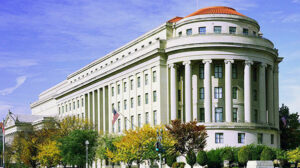
Walmart customers who use the banking services provided inside the chain’s stores are among the highest payers of fees — especially overdraft fees — in the U.S., a Wall Street Journal analysis of federal filings concluded.
The five banks with the most Walmart branches ranked among the top 10 U.S. banks in fee income as a percentage of deposits last year, the paper reported, compared to other U.S. banks that earn most of their income through lending.
It is a notable finding, especially given Walmart’s brand: First and foremost, the company has built a reputation for providing low-cost products at significant savings compared to other stores.
Walmart cannot be held completely responsible for the banks’ practices, of course. The financial sector is highly regulated, and no third-party retailer is in a position to set standards or make policies.
However, Walmart told the Journal that it has a thorough process for vetting banks to make sure they are in line with its philosophy.
Financial Reform? What Financial Reform?
Apart from the Walmart branding issue, the report highlights some other concerns. In spite of curbs on financial industry practices in the last few years, it still is possible for providers to levy high fees on consumers in the lowest economic brackets, making it more difficult for them to work their way out of debt. A new government agency, the Consumer Finance Protection Bureau, was established to curtail such activities. Why do they still occur?
The Wall Street Journal leads off its article with the story of a consumer who knowingly overdraws her checking account to pay for a needed car repair. The US$30 fee, which translated into an APR of more than 300 percent, was actually cheaper than a payday loan, the borrower said.
In the bank’s defense, there are certain financial, market, regulatory and business realities that cannot be ignored.
“While I am not going to defend high-cost fees for financial products, I would say that the lenders often have high fixed costs for each transaction that can work out to a higher percentage of the amount borrowed than they would be for larger transactions,” David Reiss, a professor at Brooklyn Law School, told CRM Buyer.
“So, I would say that there is some gouging going on in this market, but also some basic business reality,” he remarked.
Yet it appears that financial providers use the high credit risk argument even when they don’t have to, said Tisa L. Silver, associate director of the Financial Education and Wellness office at the University of Maryland.
“For example, prepaid cards come along with fees attached,” she told CRM Buyer.
“For years, providers have said such fees are necessary to cover the cost of administering the cards, particularly because they cater to a population considered to have a higher credit risk,” Silver noted — an interesting and disingenuous argument, because prepaid cards function like debit cards, and there is no credit involved.
“It is normal for consumers with high credit risk to be penalized in the form of higher interest rates when they have been granted access to credit,” she observed.
Also, these are last-resort tools, which is another reason why the fees are so high, Douglas Robinson of the nonprofit NeighborWorks America told CRM Buyer.
“The consumers of these products — whether they are [taking out] payday loans, title loans or knowingly using overdraft charges — are desperate,” he said. “If your car is broken and you need it to go to work, getting a $200 loan right now to get it fixed is more important than the fact that the cost of that loan may be $220 in seven days at an exorbitant rate of interest.”
Many consumer advocates hope that the CFPB will take some action to level the playing field. To date, though, the CFPB has been more inclined to issue reports than take enforcement actions. This could be rooted in strategy, of course, and not timidity. The CFPB is a lightning rod for political disputes and may well have decided to move slowly on certain industry practices as it picks off the bad players here and there.
There are signs that it eventually will make a move on excessive banking and finance fees. In a report last year, the bureau criticized the banking industry for confusing practices that led to overdraft fees levied on consumers — a strong signal that it eventually will wade into this area with an eye to addressing a bank practice that generates about $32 billion in revenue every year.























































Social CRM
See all Social CRM